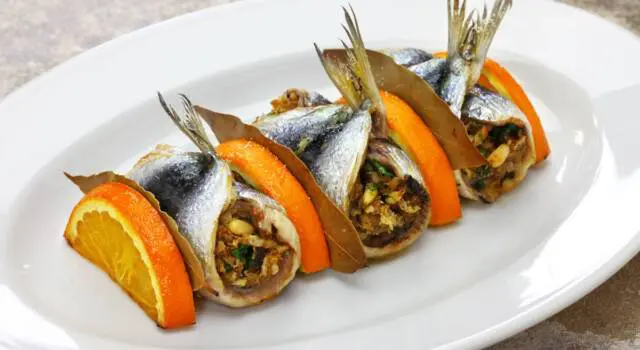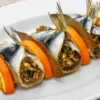The History of Sardine a Beccafico
From the Noble Floors to the Streets of Palermo
In the eighteenth century in Palermo, it was customary for the aristocracy to eat a small bird better known as the “beccafico” (Garden Warbler).
The person who cooked this and other delicacies for the nobles was the French chef whose proper name was monsieur le chef. Sicilian people were unfamiliar with foreign languages, so the correct name was shortened to “monsù”. He was the one who served the bird, arranging its tail decoratively upright, which intrigued butlers and maids who were astonished by such creativity and skill. The servants, upon returning home to their families, attempted to replicate the same dish using more affordable ingredients, as the “beccafico” was too expensive. The sardines offered an alternative, as the fish became even cheaper when unsold for a few days and lost freshness and quality. Opened, deboned, and used as a base, sardine was rolled with toasted breadcrumbs, salt, chopped anchovies, raisins, and pine nuts. The prepared fish roll was placed in a baking dish with bay leaves and citrus juice (lemon or orange) with the tail facing up as a nod to the original recipe from which it was derived.

Nothing was left to chance. Pine nuts and bay leaves were included to prevent food poisoning from less fresh fish. The food not only provided nourishment, but also contained a medicinal remedy that made it digestible. Nowadays, the capinera is not cooked anymore, while sardines prepared in the beccafico style have become a staple of Sicilian cuisine. Over the years, the cuisine of the Gattopardi has gradually moved from the opulent dining tables of the upper floors down to the streets, where it has been reinterpreted by the humbler folk, surviving beyond its aristocratic origins.



